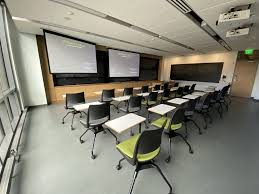Understanding the Importance of Classroom Environments

Introduction
Classroom environments play a vital role in shaping the educational experiences of students. In recent years, with the rise of different teaching methodologies and an increased focus on student well-being, the significance of a well-structured and nurturing classroom space has gained heightened attention. This topic has become particularly relevant in light of the disruptions caused by the COVID-19 pandemic, which forced educators worldwide to adapt to new learning modalities.
Creating an Effective Classroom Environment
Numerous studies have indicated that the physical and emotional aspects of a classroom can directly influence student engagement, motivation, and overall academic performance. A well-designed classroom can foster a sense of belonging and safety, encouraging students to participate actively in their learning. Features such as flexible seating arrangements, natural lighting, and access to technology contribute significantly to a positive learning atmosphere.
Current Trends in Classroom Design
As educational institutions strive to meet the diverse needs of their learners, innovative classroom designs are being implemented across schools in the UK. This includes the use of ‘learning hubs’, which integrate collaborative and independent workspaces to promote interaction among students. Teachers are now being trained to create inclusive environments that accommodate students’ varying learning styles. Furthermore, with the increasing incorporation of digital tools, classrooms are transforming into dynamic spaces that support both face-to-face and online learning.
Importance of Emotional Well-being
Another crucial element in the effectiveness of classroom environments is the focus on emotional well-being. As educators recognise the impact of mental health on learning outcomes, initiatives aimed at promoting emotional intelligence and resilience are being embedded within the curriculum. Programs that teach mindfulness, conflict resolution, and empathy are designed to enhance students’ social skills and create a more supportive learning community.
Conclusion
In conclusion, the importance of classroom environments cannot be understated, as they are at the heart of educational success. With ongoing developments in teaching practices and an increasing emphasis on holistic approaches to education, the future of classrooms is likely to be characterised by flexibility, inclusivity, and technological integration. As educators, parents, and policymakers continue to evolve their strategies, the ultimate goal remains clear: to create optimal learning environments that empower students to thrive and succeed in their educational journeys.








